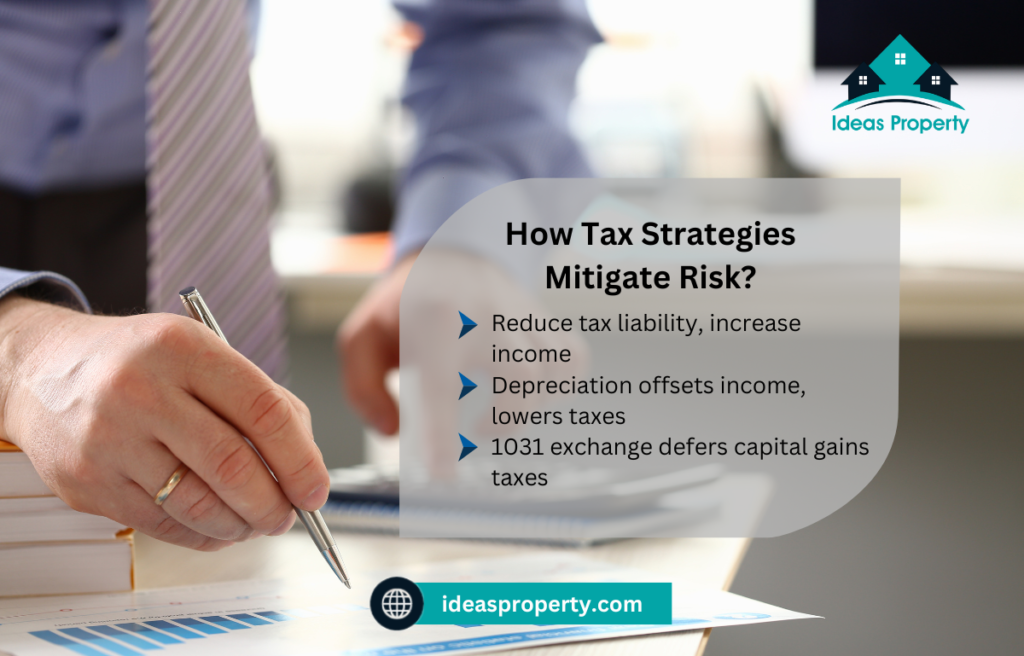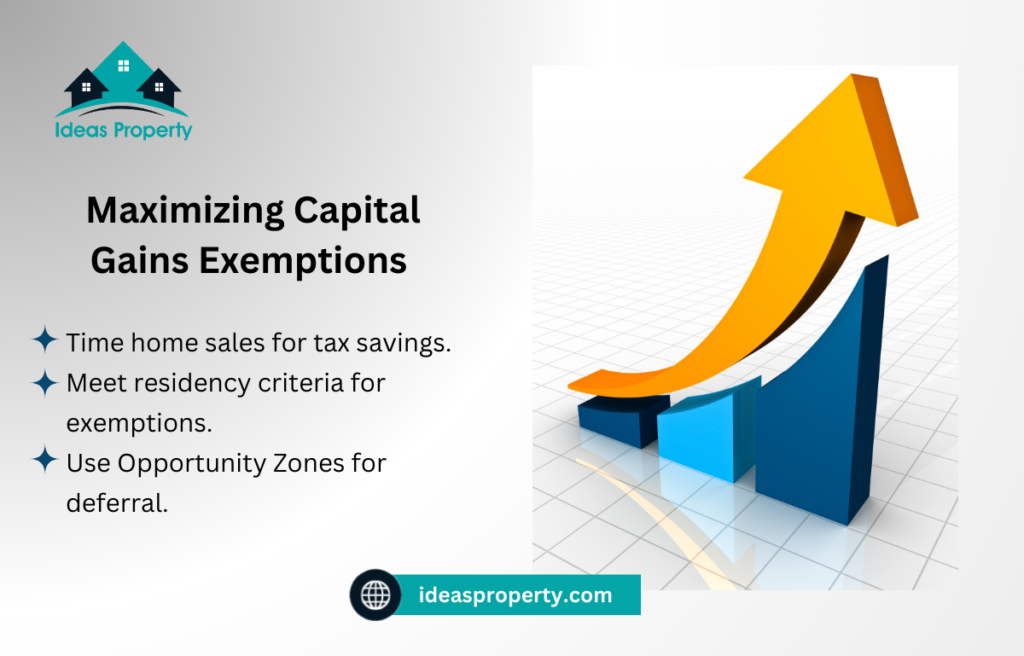Real estate tax strategies are essential tools for property investors, homeowners, and businesses to minimize tax liabilities while maximizing their investment returns. By employing smart tax planning, individuals can leverage various deductions, credits, and tax-deferral opportunities to keep more of their hard-earned money. Whether you’re selling a property, managing a rental portfolio, or looking to pass real estate assets to heirs, understanding key tax strategies can make a significant financial impact. In this guide, we will explore the best practices and approaches to reduce tax burdens legally and efficiently.
What Are Real Estate Tax Strategies and Why Do They Matter?
Real estate tax strategies are crucial for anyone looking to optimize their investments and reduce tax liabilities. These strategies encompass a variety of methods to legally lower taxes, such as taking advantage of deductions, deferring taxes, and structuring transactions to minimize tax consequences. Whether you’re a real estate investor, a homeowner, or a developer, understanding these strategies can save you thousands of dollars and ensure that you comply with tax laws efficiently.
Tax planning plays a vital role in financial decision-making within real estate. It helps you prepare for tax payments, avoid penalties, and optimize your investment returns. Without effective tax strategies, property investors could face higher-than-necessary tax bills, diminishing the overall profitability of their real estate ventures. This is why it’s essential to be proactive in learning and applying real estate tax strategies, ensuring you’re legally reducing your tax burden while maximizing your financial benefits.
How Can Real Estate Tax Strategies Reduce Investment Risk?
One of the primary benefits of real estate tax strategies is their ability to mitigate investment risks. By reducing the overall tax liability on property transactions, investors can increase their net income and safeguard against unexpected financial setbacks. For instance, depreciation deductions allow investors to offset income, which can reduce their taxable income and result in lower taxes owed. This, in turn, strengthens the investment’s cash flow and provides a financial buffer.
Additionally, tax strategies like the 1031 exchange enable investors to defer paying capital gains taxes when they reinvest proceeds from a sale into a new property. This deferral of taxes provides more liquidity and flexibility, allowing investors to upgrade their portfolios without the immediate burden of tax liabilities. By reducing the impact of taxes on each transaction, investors can focus on long-term growth and minimize financial risks associated with short-term tax payments.

What Are the Benefits of Early Tax Planning for Real Estate Investors?
Early tax planning allows real estate investors to anticipate future tax liabilities and develop strategies that maximize deductions and credits throughout the investment’s lifecycle. By planning ahead, investors can structure their acquisitions, renovations, and sales in ways that optimize their tax outcomes. For instance, understanding the tax implications of buying and holding versus selling properties can help investors make informed decisions that align with their financial goals.
Moreover, early tax planning provides investors with the opportunity to leverage tools like depreciation and cost segregation studies, which can maximize deductions over the years. By knowing what to expect from a tax perspective, investors can better manage cash flow, avoid tax penalties, and strategically plan property sales or acquisitions to occur during favorable tax periods. In the long run, this level of foresight not only reduces the overall tax burden but also enhances the profitability and sustainability of real estate investments.
How Can I Minimize Capital Gains Tax on Property Sales?
Minimizing capital gains tax on property sales is a key concern for real estate investors, as capital gains can significantly reduce profit margins. One effective strategy is utilizing the primary residence exclusion, which allows homeowners to exclude up to $250,000 (or $500,000 for married couples) in capital gains from the sale of their home, provided they’ve lived in the property for at least two of the last five years. This tax break can drastically reduce or even eliminate capital gains tax, making it one of the most valuable tools for individual homeowners.
Another powerful method is conducting a 1031 exchange. This provision allows investors to defer capital gains taxes when they sell one investment property and purchase another of “like-kind.” By rolling the gains into a new investment property, investors can continue to grow their portfolios without the immediate tax hit. However, it’s important to understand the strict timelines and rules associated with a 1031 exchange to ensure compliance and maximize the tax deferral benefits.
What Are the Best Practices for Using Capital Gains Exemptions?
Capital gains exemptions provide significant relief, especially for homeowners and investors who meet the IRS criteria for excluding capital gains from taxable income. The primary residence exclusion is the most well-known exemption, but to fully benefit from it, homeowners need to plan carefully. For instance, timing the sale of your home strategically—such as after major market appreciation but before crossing the threshold of exclusion limits—can help maximize tax savings. Additionally, ensuring that the property has been used as a primary residence for at least two out of the last five years before the sale is crucial for eligibility.
For real estate investors, leveraging opportunity zones is another way to reduce or defer capital gains. By reinvesting capital gains into a Qualified Opportunity Fund (QOF), investors can defer paying taxes on those gains until 2026 or whenever the investment is sold, whichever comes first. If the investment is held for 10 years, any appreciation in the Opportunity Zone investment can potentially be excluded from capital gains tax altogether. These exemptions are highly beneficial for long-term planning and maximizing returns.

How Can I Use Installment Sales to Spread Out Capital Gains?
An installment sale allows property sellers to spread out their capital gains tax liability over several years, which can result in lower annual tax payments and reduce the immediate tax impact. By receiving payments in installments, rather than a lump sum, sellers only pay capital gains tax on the portion of the gain received each year. This strategy can be particularly useful if the sale of the property would push the seller into a higher tax bracket in a single year. By spreading the gains over multiple years, the seller can remain in a lower tax bracket, thereby reducing the overall tax rate applied to the gains.
In addition to tax savings, installment sales also provide cash flow benefits for sellers who might prefer a steady stream of income over time rather than a one-time payment. However, there are risks involved, such as the potential for the buyer to default on payments, so it’s important to carefully structure the agreement. Additionally, it’s crucial to work with a tax professional to ensure compliance with IRS rules and to avoid any unintended tax consequences.
What Are the Benefits of 1031 Exchange in Real Estate Tax Strategies?
The 1031 exchange is one of the most powerful tools available to real estate investors, as it allows them to defer capital gains taxes when selling a property and reinvesting the proceeds into a “like-kind” property. This tax deferral can significantly increase an investor’s purchasing power, allowing them to move into larger or more lucrative properties without the immediate burden of a hefty tax bill. By utilizing a 1031 exchange, investors can compound their real estate investments and grow their portfolio over time, leveraging tax savings to maximize future profits.
Another key benefit of the 1031 exchange is the ability to reset the depreciation clock. Depreciation is a non-cash deduction that reduces taxable income each year, but when a property is sold, depreciation recapture taxes are due on the amount previously claimed. By using a 1031 exchange, investors can defer both capital gains and depreciation recapture taxes, thereby keeping more of their profits and deferring tax liabilities for as long as they continue exchanging properties. This continuous deferral can last until the investor’s death, at which point the heirs receive a stepped-up basis, effectively eliminating capital gains taxes on the property.
How Does a 1031 Exchange Defer Taxes on Investment Properties?
A 1031 exchange defers taxes by allowing investors to sell an investment property and reinvest the proceeds into another “like-kind” property without recognizing the capital gains at the time of sale. To qualify, the transaction must meet several IRS requirements, including strict timelines. The investor must identify a replacement property within 45 days of selling the original property and complete the purchase within 180 days. By adhering to these rules, the investor can defer paying capital gains taxes until they ultimately sell the new property, or continue deferring taxes by entering into additional exchanges.
This deferral mechanism provides real estate investors with flexibility and liquidity, as they can reinvest their full proceeds into new properties rather than paying taxes on capital gains. Over time, the deferred taxes can be used to acquire higher-value properties, increase cash flow, or diversify a real estate portfolio. It’s important to note that while the taxes are deferred, they are not eliminated unless the investor holds the property until death, in which case the estate may benefit from a step-up in basis, erasing the deferred tax liability.
What Are the Risks and Limitations of a 1031 Exchange?
While the 1031 exchange offers significant tax deferral benefits, it comes with risks and limitations that investors must consider. One of the biggest risks is failing to meet the IRS’s strict timeline requirements. Missing the 45-day identification window or the 180-day closing window can result in the entire transaction becoming taxable, leaving the investor with an unexpected tax bill. Additionally, if the replacement property is of lesser value than the one sold, the investor may face “boot,” or taxable income, on the difference.
Another limitation is that the properties involved must be considered “like-kind,” which can be broadly interpreted but still restricts certain types of transactions. For example, personal residences, vacation homes, or properties outside the United States generally do not qualify for a 1031 exchange. Moreover, the deferred capital gains and depreciation recapture taxes are not forgiven; they are merely postponed. Eventually, when the property is sold without further exchange, all the accumulated tax liabilities become due.
Additionally, market risk is always a factor. If property values decrease after completing a 1031 exchange, the investor could face a situation where they have deferred taxes on a property that is now worth less than its original purchase price, leading to financial strain. Finally, 1031 exchanges are highly complex, and the investor must ensure compliance with all IRS regulations, making it crucial to work with experienced tax advisors and qualified intermediaries.
How Can Depreciation Deductions Lower My Tax Burden?
Depreciation deductions are a powerful tool for real estate investors to reduce their taxable income. When you own an income-producing property, the IRS allows you to depreciate the cost of the building (but not the land) over its useful life. For residential properties, the depreciation period is 27.5 years, while commercial properties can be depreciated over 39 years. This non-cash expense reduces the property’s taxable income, meaning you can report lower profits, which in turn reduces the amount of tax owed each year.
Depreciation not only provides immediate tax relief but also helps offset other property-related expenses, such as repairs, management fees, and mortgage interest. However, it’s important to remember that when you sell the property, the IRS will require you to recapture the depreciation, meaning you’ll pay taxes on the amount of depreciation you claimed during ownership. Even with this recapture, the ability to defer tax payments through depreciation is a significant benefit for real estate investors, improving cash flow and long-term financial planning.
What Is the Difference Between Straight-Line and Accelerated Depreciation?
The straight-line method of depreciation spreads the cost of a property evenly over its useful life. For example, if you own a residential rental property, you can deduct an equal portion of its cost (excluding land value) each year for 27.5 years. This method is simple and provides a steady, predictable deduction year after year. It is also the most commonly used method for real estate, especially for residential properties, as it aligns with the IRS’s guidelines for depreciation of buildings.
In contrast, accelerated depreciation allows for larger depreciation deductions in the early years of ownership. This method, often used with the Modified Accelerated Cost Recovery System (MACRS), can front-load the tax benefits, allowing investors to recoup more of their investment sooner. This strategy is typically applied to non-building assets such as equipment or improvements, rather than the building itself. By accelerating depreciation, investors can reduce their tax liabilities more heavily in the early years, improving cash flow when it’s needed most. However, the deductions become smaller in later years, which means future tax savings will be lower.
How Can I Maximize Depreciation Through a Cost Segregation Study?
A cost segregation study is a tax planning tool that allows property owners to accelerate depreciation on certain parts of a building, rather than depreciating the entire structure over 27.5 or 39 years. Through a cost segregation study, a property is analyzed to identify components that can be depreciated more quickly, such as electrical systems, plumbing, HVAC units, and fixtures. These elements can often be depreciated over 5, 7, or 15 years, rather than the standard building depreciation schedule.
By breaking out these shorter-lived assets, a cost segregation study can significantly increase the depreciation deductions in the early years of ownership, providing immediate tax relief and improved cash flow. This strategy is especially beneficial for investors who plan to hold the property for a limited time or those looking to offset high-income years. However, it’s important to work with a qualified professional to conduct the study, as the IRS has strict rules governing cost segregation, and a poorly executed study could trigger an audit or result in penalties.
What Real Estate Expenses Are Tax-Deductible?
Real estate investors have access to a wide range of tax deductions that can significantly reduce their overall tax burden. Understanding which expenses are tax-deductible allows investors to optimize their financial strategies and improve cash flow. Deductions not only apply to rental properties but also to properties used for business purposes or investments. The most common deductions include mortgage interest, property taxes, operating expenses, depreciation, and repairs, all of which directly impact the profitability of real estate ventures.
The IRS allows property owners to deduct any expenses that are considered “ordinary and necessary” for managing, conserving, or maintaining their property. This includes costs related to maintaining the property, such as repairs, insurance, and management fees. By taking full advantage of these deductions, real estate investors can significantly lower their taxable income and increase their net returns.
Can I Deduct Mortgage Interest and Property Taxes?
Yes, mortgage interest and property taxes are two of the largest deductions available to real estate investors and homeowners. For rental properties, the interest paid on a mortgage is fully deductible as a business expense, which can significantly reduce the amount of taxable income. This is particularly valuable for investors with high mortgage balances, as the interest portion of the loan payments is typically substantial during the early years of a loan term. Additionally, interest on other property-related loans, such as loans for property improvements, is also deductible.
Property taxes are another major deductible expense. Both residential homeowners and real estate investors can deduct property taxes paid to local governments. For rental properties, these taxes are considered a business expense and can be deducted from rental income. For homeowners, property tax deductions are limited based on the Tax Cuts and Jobs Act of 2017, which placed a cap of $10,000 on the deduction for state and local taxes, including property taxes. Nevertheless, these deductions can still provide significant savings for property owners, helping to reduce the overall cost of holding and maintaining real estate.
What Other Common Real Estate Expenses Qualify for Deductions?
In addition to mortgage interest and property taxes, many other operating expenses related to managing and maintaining real estate qualify for tax deductions. Repair costs, such as fixing leaks, repainting, and replacing broken fixtures, are fully deductible in the year they are incurred. However, it’s important to distinguish between repairs and improvements. Repairs maintain the property’s current condition, while improvements add value and must be depreciated over time rather than deducted immediately.
Insurance premiums for rental properties are also fully deductible, including coverage for fire, theft, and liability insurance. Investors can deduct the cost of property management services, advertising for tenants, and legal fees associated with managing the property. Utilities, such as water, electricity, and gas, are deductible as well, provided they are not covered by the tenant.
Another often overlooked deduction is home office expenses. If part of your home is used exclusively for managing your real estate business, you may be able to deduct a portion of your home’s expenses, such as utilities and maintenance, as part of your business expenses. These deductions can add up, providing significant tax savings and improving the overall return on real estate investments.
How Does the Primary Residence Exclusion Work for Homeowners?
The primary residence exclusion is a valuable tax benefit that allows homeowners to exclude a significant portion of their capital gains from the sale of their primary residence. Under the Taxpayer Relief Act of 1997, single homeowners can exclude up to $250,000 in capital gains, while married couples filing jointly can exclude up to $500,000. This exclusion applies only to the sale of a home that the taxpayer has owned and used as their primary residence for at least two of the five years preceding the sale. This exclusion can be claimed repeatedly, as long as the eligibility requirements are met, making it a highly beneficial tool for reducing tax liability when selling a home.
This exclusion helps homeowners avoid a potentially large tax bill, particularly in markets where home prices have appreciated significantly. It’s also important to note that homeowners who meet the ownership and use requirements can still claim the exclusion even if they have rented out the property for a portion of the five-year period, as long as it was their primary residence for at least two of those years.
Who Qualifies for the Primary Residence Exclusion?
To qualify for the primary residence exclusion, homeowners must meet both the ownership test and the use test. The ownership test requires that the homeowner has owned the property for at least two years during the five years leading up to the sale. These two years do not need to be consecutive, allowing flexibility for homeowners who may have rented out their home for part of the five-year period.
The use test requires that the homeowner lived in the property as their primary residence for at least two years during the same five-year period. Again, these years do not have to be consecutive. For instance, if a homeowner lived in the home for one year, rented it out for three years, and then moved back in for a final year before selling it, they would still meet the use requirement. Additionally, the exclusion can apply even in cases where the homeowner has more than one property, but only the primary residence can qualify for the exclusion.

How Often Can Homeowners Use the Primary Residence Exclusion?
Homeowners can use the primary residence exclusion multiple times, but there is a two-year rule that limits how frequently the exclusion can be applied. Specifically, homeowners must wait at least two years from the date they last used the exclusion before they can use it again. This means that if a homeowner sells their home and claims the exclusion, they must wait two years before they can claim the exclusion on the sale of another primary residence.
This rule provides flexibility for homeowners who move frequently or sell multiple homes over time, allowing them to benefit from the exclusion repeatedly as long as the two-year gap between sales is maintained. It also encourages long-term homeownership by providing significant tax savings for homeowners who stay in their properties for at least two years. However, if the homeowner does not meet the two-year ownership and use requirements or sells their home within two years of a previous sale where the exclusion was claimed, they may not qualify for the full exclusion or any exclusion at all, depending on the circumstances.
Real estate tax strategies are essential tools that can significantly reduce tax liabilities and increase profitability for investors and homeowners alike. Whether utilizing the primary residence exclusion, deferring capital gains through a 1031 exchange, or maximizing deductions via depreciation, these strategies provide substantial financial benefits. By understanding and implementing these approaches, individuals can make more informed decisions, reduce their overall tax burden, and improve the long-term sustainability of their real estate investments.
Incorporating tax strategies into your real estate planning is not just about saving money in the short term but also about maximizing the ROI in real estate over time. By leveraging tax benefits like deductions, exclusions, and deferrals, investors can improve their cash flow, reinvest in more lucrative properties, and ultimately grow their portfolios more efficiently. Strategic tax planning ensures that your real estate ventures remain profitable and sustainable, allowing you to achieve better returns while complying with tax regulations.











